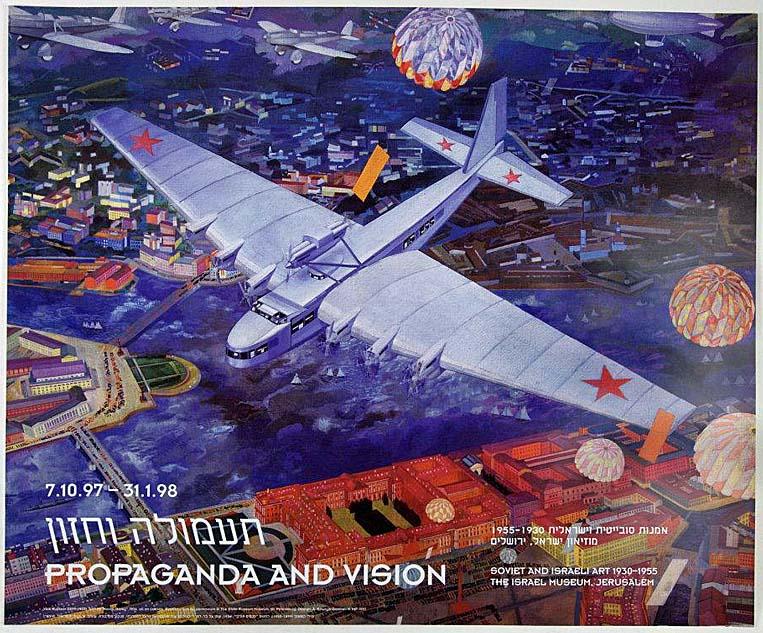Propaganda and Vision - Soviet and Israeli Art 1930 - 1955
October 7, 1997-January 31, 1998
Catalogue designed by Nirit Tzur - Curator was Batia Donner
Location: Nathan Cummings 20th Century Art Building
Artist: Russian artists: Grassimov - Stalin's official painter - Maklov, Pilonov, Malevitz, Vera Muchina, and others. Israeli artists: Naftali Bazam, Batya Lishanski, Rubin, Mokei, Levanon, Shemi, and others.
Media: Painting, sculpture, and propaganda-related articles such as china dolls, decorated boxes and tea sets and other items produced as Official Art
The exhibition Propaganda and Vision - Soviet and Israeli Art 1930 - 1955 featured larger-than-life paintings and other art forms originating from the Stalin Era that were representive of as well as rejected by the Communist Party. These were viewed in juxtaposition to works of Israeli artists of that period. The intent of the exhibition was to show the connection between art and social conscience, and the possible influence of Russian Art on Israeli Art of that period as well as emphasize the fundamental differences in the art of the two cultures. The exhibition also reflected the role of the artist in society and his obligations to the existing social framework, as well as artistic methods of disseminating ideologies. The ties of Israeli society to Russia and the Russian revolution through folk songs, dance, public art, etc. were also expressed here. The 50 works of Russian art, arriving from the National Russian Museum of St. Petersburg, were impressively large. Themes such as sports, the life of the Kolkhoz, political events, and war were among those portrayed. Included in this exhibition will be paintings of Grassimov - Stalin's official painter - Maklov, Pilonov, Malevitz, and others, as well as the sculpture "Worker and Female Kolkhoznik", 1936 by Vera Muchina that was used as a model for a memorial statue. In addition, there will be propaganda-related articles such as china dolls, decorated boxes and tea sets and other items produced as Official Art.Source: The Israel Museumhttp://www.imj.org.il/exhibitions/presentation/exhibit.asp?id=347
Curator's note: This poster is a reprint of Vasili Kuptsov's 1934 poster

